How to Keep Chicken Breasts From Burning When Frying
I received an email from Jason, who tried my recipe for Sautéed Chicken with Garlic and Shallots and was having some problems.
He said, “The chicken breasts take nearly twice as long to cook through! So I follow the recipe strictly, using a reasonably thick pan and pre-heating it well in advance.
The outside ends up charring pretty badly. Could it be the type of chicken breasts I am buying? I get the store brand packs, which are cheaper, but the breasts seem thicker than other known brands.”
After looking at the recipe again, I had some ideas on this problem, but I wanted an expert’s view, so I emailed Chef Adam Bickel for his take on this situation. Together we came up with some probable causes and a few solutions.
Even though we are talking about sautéing chicken breasts, these cooking tips hold for sautéing chicken, beef, lamb, fish, or whatever you are cooking.
Our first thought was to turn down the heat to medium-high. Some recipes you find in cookbooks and on the Internet are written by professionals who sometimes need to remember that we don’t have the same skills.
In a restaurant, professional chefs need to cook fast, so they often have the burners cranked up to high, but they have sautéed thousands of chicken breasts this way and are comfortable with the heat.
Another chef friend of mine, Chef Ricco DeLuca, has to recalculate recipes as far as timing and burner heat to match my skills compared to his own. Otherwise, I end up burning everything.
So, whenever you look at any recipe, you must know who the writer is writing for and allow some leeway regarding cooking times and temperatures.
Looking back at the Sautéed Chicken with Garlic and Shallots recipe, I realize I must change it to make it easier for home cooks. I don’t think anybody should be sautéing on the highest heat level unless they have much experience. There are just too many things that can go wrong.
Cooking Equipment
It’s important to understand that everyone’s cooking equipment is different, and any recipe that provides exact times and heat will vary depending on that equipment.
For example, the sauté pan you use will vary in quality, size, thickness, material, etc. Each of those characteristics will affect how the chicken breast cooks.
Then there is the stove. Is it gas or electric? How many BTUs does it produce?
The ingredients – size, thickness, cold or room temperature. A piece of chicken will cook much differently right out of the refrigerator compared to breasts that are at room temperature. This is even more significant when cooking steaks.
For many home cooks, how often have you tried sautéing a chicken or piece of meat that is still partially frozen because we forgot to take it out of the freezer early enough? Do you think that will affect cooking times?
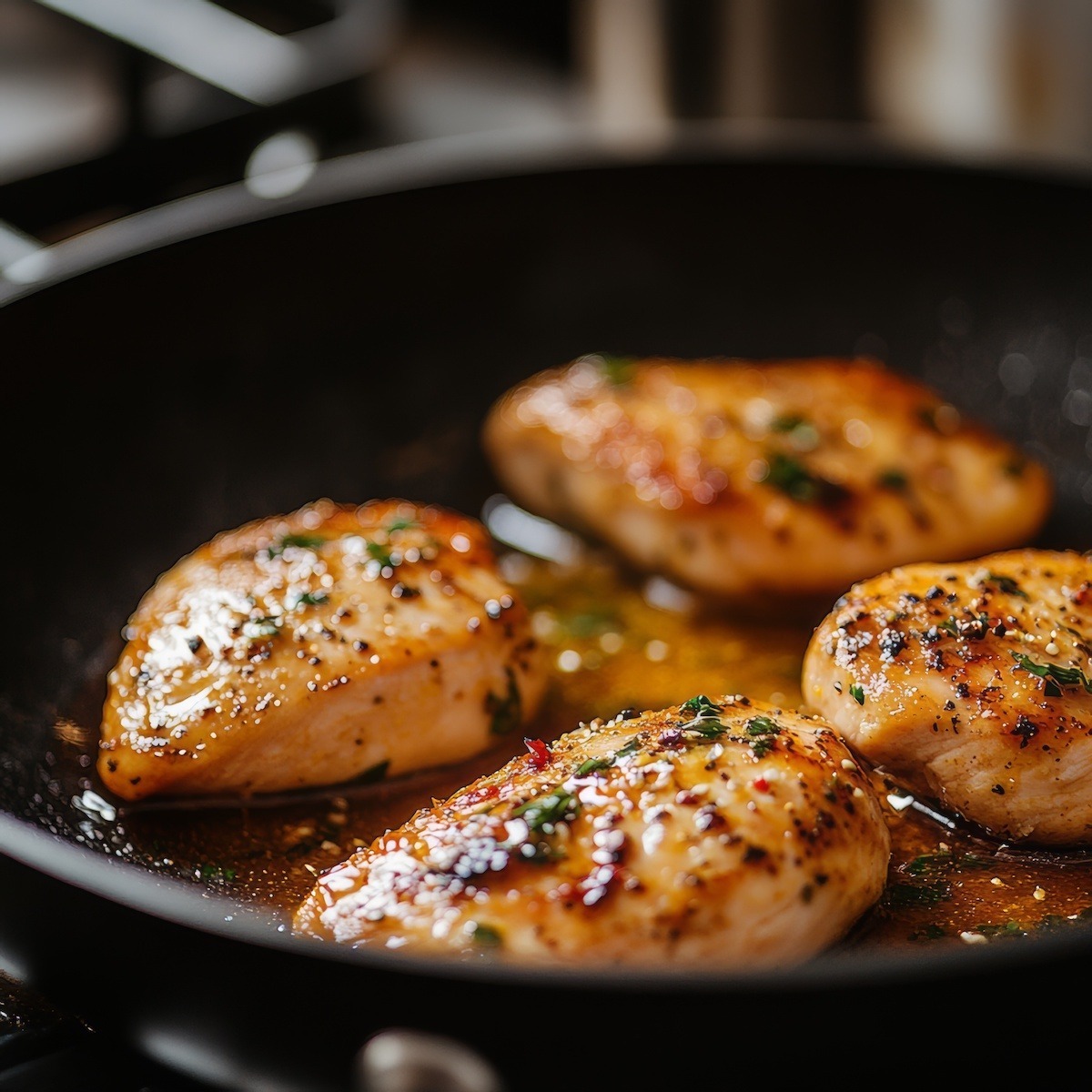
Cooking Suggestions
Here are some suggestions for sauteing chicken breasts that may be helpful to you.
Again, first, you can turn down the heat to medium-high and see if you get better results. Then, if this is still a problem, try medium. Sure, it will take a little longer, but does it matter?
Alternatively, you can pre-heat the oven to about 300 degrees, brown the chicken lightly in a sauté pan, and finish in the oven. The problem with doing it this way is that you create a different texture to the chicken by baking it versus sautéing, and two, you may lose some of the fond (brown bits stuck to the bottom of the pan) for making the pan sauce.
Another alternative would be to brown the chicken at high heat to caramelize, then reduce the heat and add a little wine, chicken stock, or water. This will create even heat on the pan’s surface, preventing hot spots and limiting the maximum temperature of the heating surface to a short period of time. This way, you can cook the chicken at a slightly lower temperature for a little longer.
Chef Alan also suggested another technique of building the sauce right in the pan. Start by sautéing the chicken briefly, maybe 45-60 seconds on each side, then continue with the recipe (including deglazing) without removing the chicken. Next, add the garlic, shallots, and liquid right into the pan with the chicken.
Not only will the addition of other ingredients and liquids make cooking the chicken a less harrowing experience (each time you add an ingredient, you lower the temperature in the pan), but you’ll also add some great flavors into the meat itself, instead of simply putting a tasty sauce over flavorless chicken.
I hope this helps you.

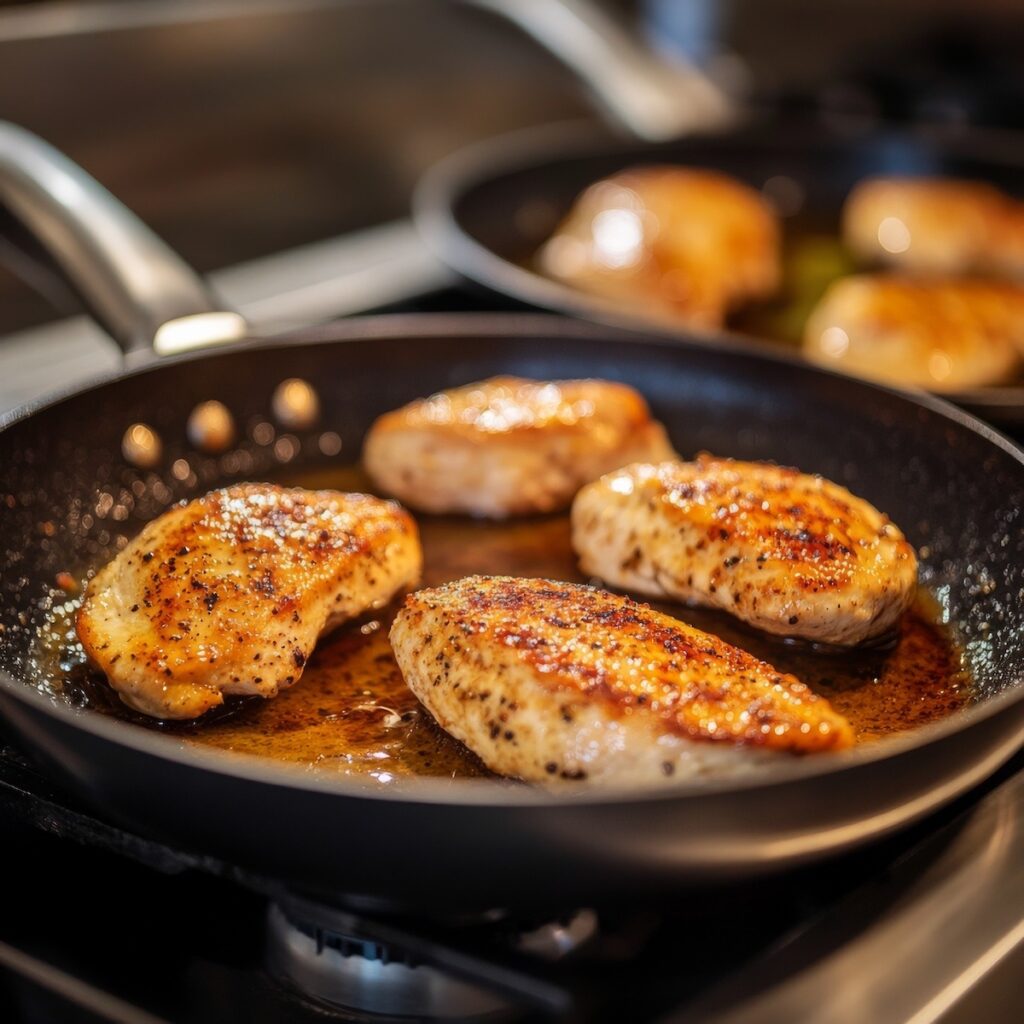
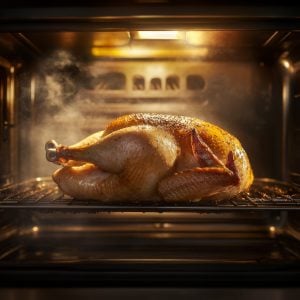
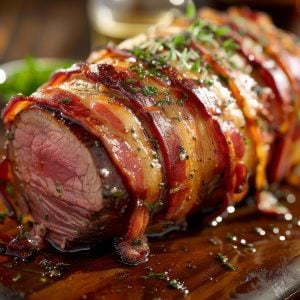
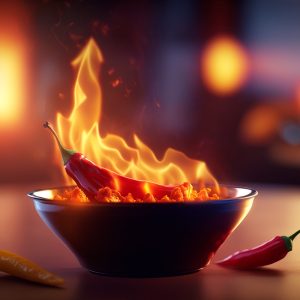
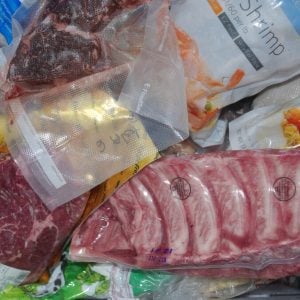

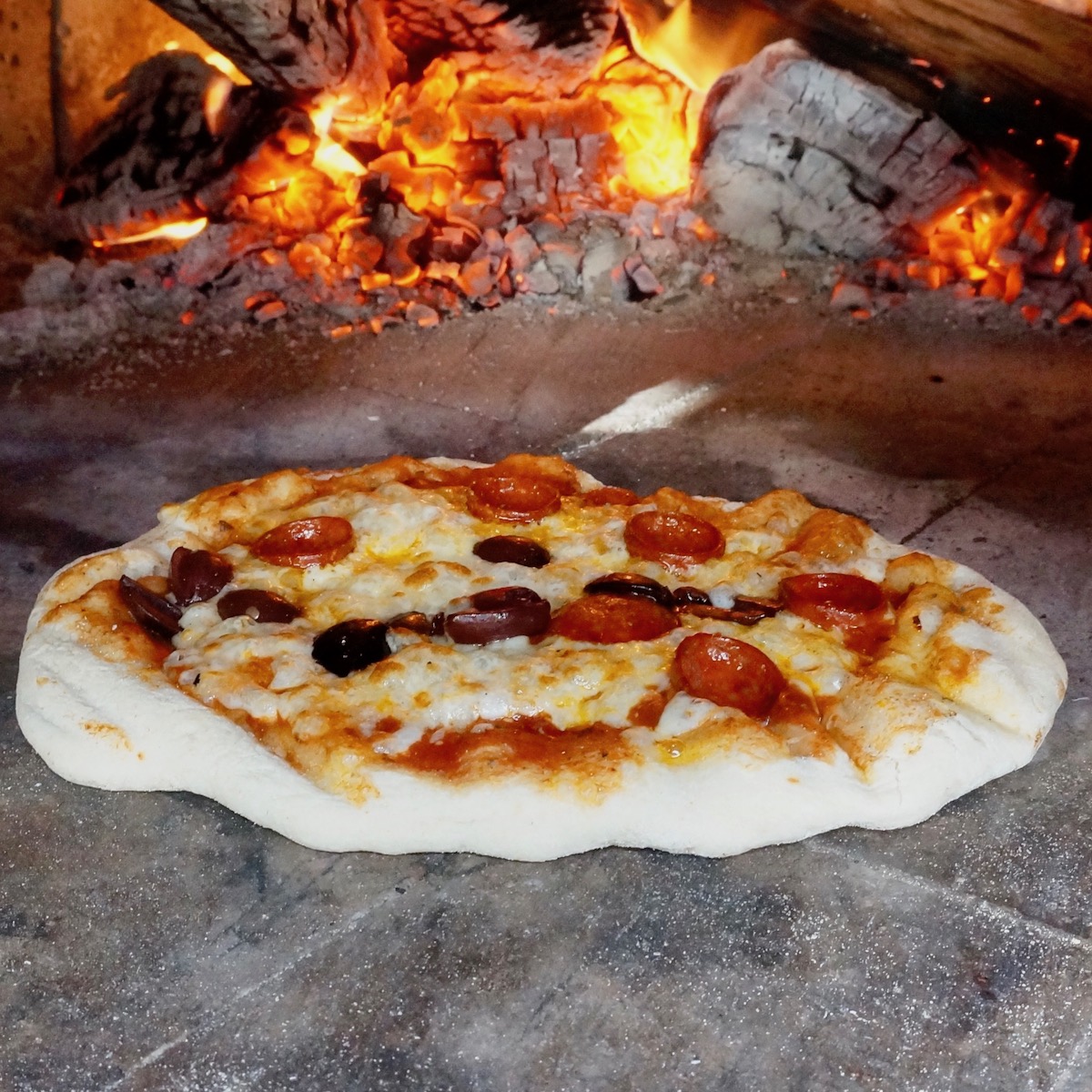
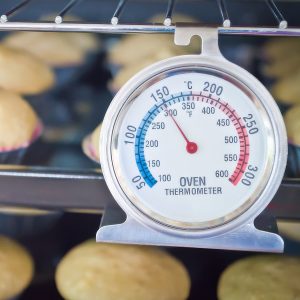
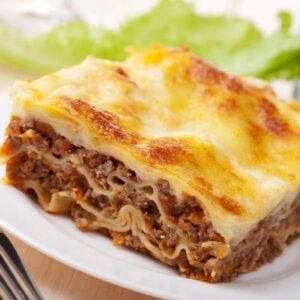
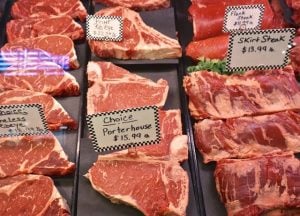


3 Responses
Dear RG,
Thank you again for answering my cooking question before I asked it. Although I consider myself a pretty good creative cook, I always seem to overcook the chicken, whether I’m following a recipe or, ahem, “winging” it.
I’m going to try your “brown for under a minute” and then simmer with rest of ingredients and liquid, lowering as I go.
If my chicken finally comes out right, I’ll let you know.
Thanks!
Dina
Hi RG,
I just cooked this for 3 today for lunch and threw in some corn kernels and finally asparagus spears with the pan sauce. It came our well, but there were some challenges along the way.
Firstly after 3 minutes either side, the chicken was beautifully browned but still did not feel cooked in the middle (these were thick chicken breasts) but I had smoking oil! I’m using a DeBuyer carbon steel fry pan, very heavy, with extra light olive oil, which apparently has a high smoke point, on maximum burn on my largest burner. No butter – I’m dairy free – but this shouldn’t make a difference. If anything, I should have more leeway with the oil.
So when the oil started to smoke, I threw in some hot water/stock I had for emergency, and put a cover on, which would have helped cook the chicken through, then I removed it from the pan and threw it in the oven to keep warm and maybe give it a few more degrees to finish cooking.
It came out looking and tasting great, but I think I was lucky – could have gone either way – and I’m a bit worried that maybe I’m cooking on too high heat as I know smoking oils are a no no! The pan sauce came out well but again I’m concerned that the smoked oil would have ended up in the sauce.
I think for future I will lower the heat and start the pan sauce with the chicken – as suggested by you – that seems like to safe bet to both prevent smoking oil and cook the chick right through.
Thanks for the tips and teaching us the fundamentals for this type of cooking!
Many recipes call for pounding the chicken before sauteing. This makes all the pieces a uniform thickness so it cooks evenly and faster. TIP: You can put the chicken breast in a large zip lock bag, lay it flat on your cutting board and pound it, not too thin, just even out the thickness. It makes for quick and easy clean up. You want to cook it quickly at fairly high heat. If you cook it too slowly the meat will be tough and dry. Happy Cooking!